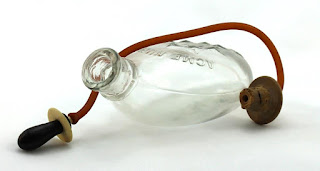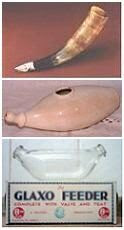Some months ago, Author Pam Crooks asked me if I might be interested in a multi-author project, The Love Train series, with nine other authors. All the couples would meet on the Union Pacific, their fledging romance aided by a matchmaking conductor, a baggage handler, and a dog named Scruffy. Their stories would then move to a town, city, or ranch.
Never having been part of a project of this sort, I agreed...whole-heartedly!
In short order I had my conflict. plot, characters, and setting. Yet, I needed a reason which would keep the hero and heroine in close proximity with one another once they got off the train. A random news segment on our local television station related the feel-good story of a soldier at Fort Bragg who was awarded custody of his two nieces after the sudden death of his sister. He and his fiancé then pushed up their wedding date so they could adopt the children before he left for overseas duty.
Bingo! I had my motive...Lucas Harmon needs a woman to care for his nieces, five-year old Lily, and 6-months old, June in his home. Caring for a five-year old seemed pretty straightforward but how would he dress, change, and particularly, feed an infant?
So, there I went, down the rabbit hole to gather information.
Baby Bottles
Before the baby bottle came into use, milk was spoon fed to infants or given via a cow's horn fitted with a chamois at the small end as a nipple. When baby bottles were adopted during the Industrial Revolution, many popular designs evolved. Some were submarine-shaped and made from metal, glass, or pottery. They had a circular opening in the top that could be plugged with a cork. The other end tapered to a hole with a rim for securing a nipple. Another popular design was a sprouted feeder, which resembled a teapot, with a handle and spout. The nipple opening of both types of bottles was covered with punctured chamois cloth, parchment or a sponge.
Charles Windship of Roxbury, Massachusetts patented the first glass nursing bottle in 1841. According to his patent on file...
...the formation of this remedy enables the child to think that it derives its nourishment
directly from the mother, as it feeds in the natural position."
Another variant, a glass flask was introduced in 1860. These bottles were often in the shape of a banjo with a rubber straw which allowed children to feed themselves. These bottles were marketed with names like "The Alexandria", "Little Cherub", and "Mummy's Darling".
However, the rubber tube that ran from the bottle to the nipple was a breeding ground for bacteria. And according to Mrs. Beeton (Mrs. Beeton's Household Management), she recommended only washing the bottles every 2-3 weeks!

In 1894, the first "banana" shaped feeder appeared on the market. Produced in England by Allen and Hanburys, it was marketed as being "most easily cleaned". The bottle was made
of clear molded glass and has a flat base to keep it stable on a surface. At one end of the bottle there is a hole for pouring in the milk or feeding mixture. A metal cap is put on after filling. At the other end a similar hole, covered by a rubber nipple, lets the baby suck out the milkInfant Formula
While advancements were being made in bottle production, advancements were also being made in the field of infant formula.
After an infant was weaned from breast, cow's or goat's milk, she was given a food called 'pap'. The mixture which consisted of boiled milk or water was thickened with baked wheat flour and, sometimes, egg yolk. A more elaborate infant food, called panada, was made from bread, flour, and cereals cooked in a milk- or water-based broth.
With mother's milk as the ideal, many scientists tried to formulate nonhuman milk to resemble human milk. In 1865, a German scientist developed, patented, and marketed an infant food, first in a liquid form and then in a powdered form for better preservation. His formula---consisting of cow's milk, wheat and malt flour, and potassium bicarbonate--was considered the perfect infant food.
In 1835, William Newton patented evaporated milk. And in 1853, Texan Gale Borden added sugar to the evaporated milk, canned the substance, and sold it as Eagle Brand Condensed Milk, which became a popular infant food.
By 1883, there were 27 patented brands of infant food. These products came in powdered form and consisted of sugars and starches that were to be added to milk. Name brands included Nestle's Food©, Horlick's Malted Milk©, Hill's Malted Biscuit Powder©, and Mellin's Food©. However, they were fattening but lacked valuable nutrients.
Although it has taken hundreds of years, at least in the United States and in other developed countries, babies now have food that is sweet and clean. Mother’s milk is still recommended, but artificial infant feeding has come a very long way, indeed!
****************************************************
Love Train Series
Commencing on April 1st and releasing every two weeks through August 15th, these sweet historical romances are penned by some of the most talented authors in the romance genre, and their stories are filled with light, laughter, suspense, and most importantly, a forever kind of love.
Some people come into your life as lessons…
Unexpected fatherhood finds former bank detective,
Lucas Harmon desperate for a woman to care for his orphaned nieces. A
governess…perhaps? A housekeeper…maybe? A wife…definitely not! Six years ago,
the wealthy Chicago socialite he planned to wed, publicly spurned his
affections. Despite his determination to guard his feelings, a meddling
matchmaking conductor and an encounter with a past acquaintance threatens to upend
his heart.
…some come as blessings
Anxious to leave behind the whispers and
stares of two failed engagements, Boston socialite, Ainsley MacKenzie hopes for solitude on her
way to New Hope, Kansas. But when the kindly conductor enlists her help to care
for two orphaned girls, she couldn’t say no. Little did she know their uncle
and guardian was the one man she couldn’t forget… Lucas Harmon.
Taking a chance, Ainsley offers Lucas an
unusual (some might say, scandalous!) arrangement. She’ll look after the
children, read them stories and cook their meals until Christmas, giving Lucas
time to find a permanent replacement. Yet, the longer she cares for the family the
more she longs to be part of it—whatever the risk to her heart.
Here's a link to view the books, authors, and release dates.












No comments:
Post a Comment
Thank you for visiting Sweethearts of the West! We are very sad to require comment moderation now due to the actions of a few spam comments. Thank you for your patience.